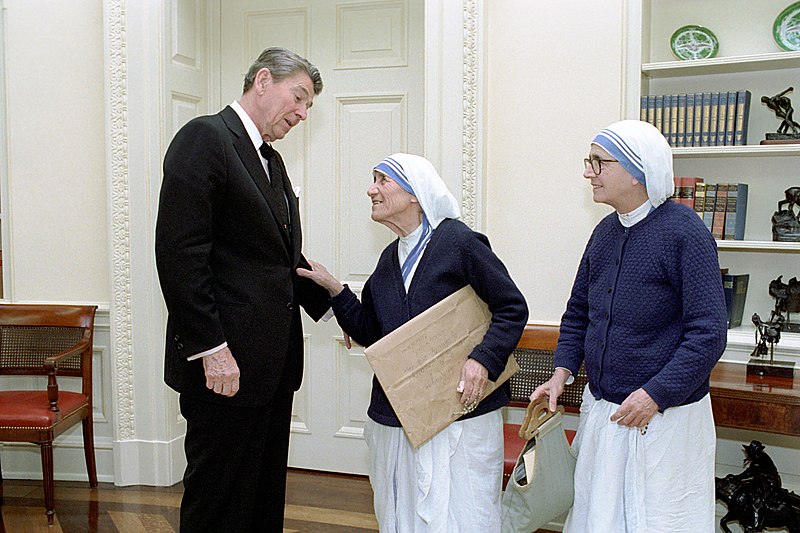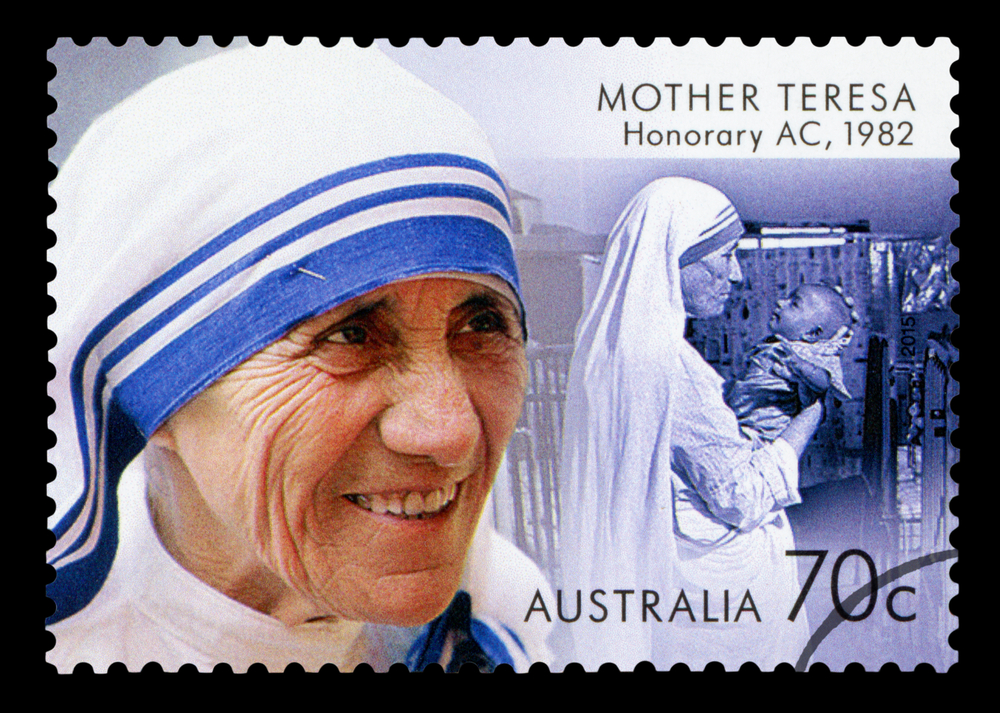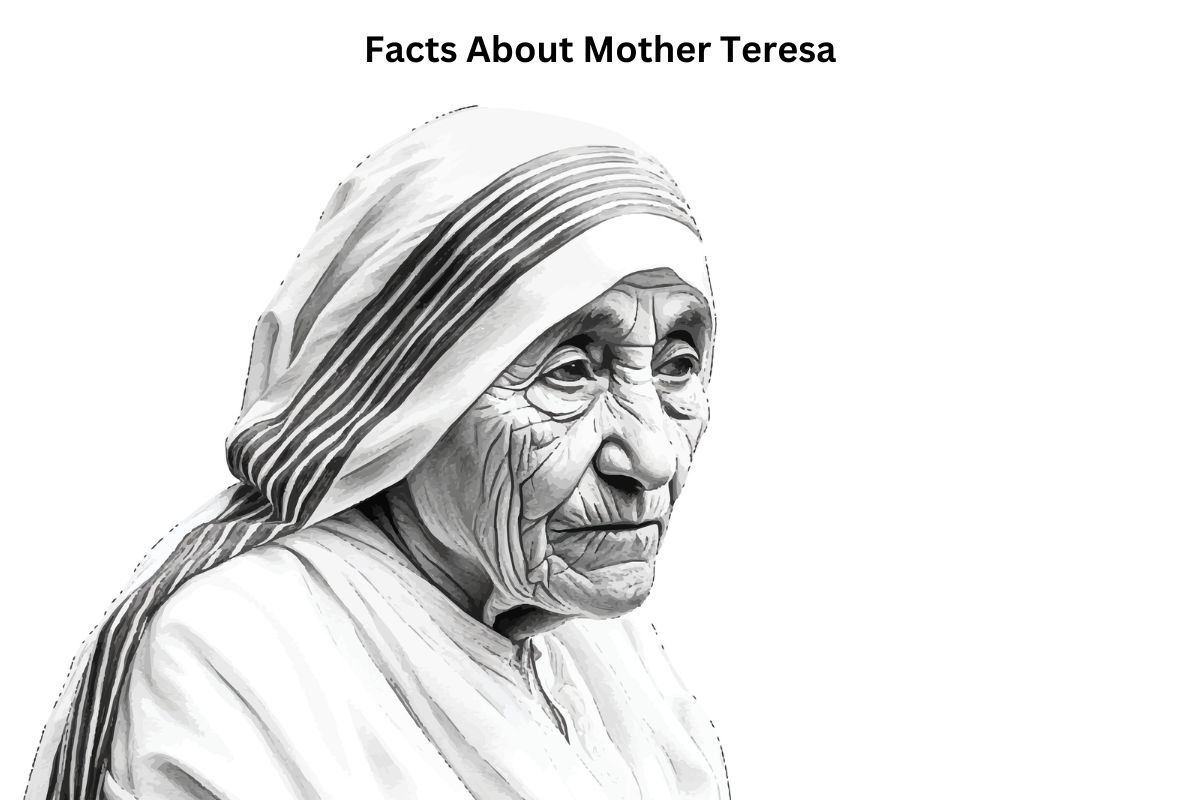Mother Teresa, also known as Saint Teresa of Calcutta, was a remarkable Catholic nun and humanitarian whose life’s work was defined by her unwavering dedication to serving the poor and sick.
Born on August 26, 1910, in Skopje, North Macedonia, she founded the Missionaries of Charity in 1950, a religious congregation that expanded its operations to over 130 countries worldwide.
Her tireless efforts earned her the Nobel Peace Prize in 1979, and she was later canonized as a saint in 2016.
Despite facing both praise and criticism, Mother Teresa’s legacy continues to inspire people to engage in acts of compassion and service. She passed away on September 5, 1997, in Calcutta, leaving a lasting impact on the world.
Mother Teresa Facts
1. Born on August 26, 1910, in Skopje, North Macedonia
Mother Teresa was born as Anjezë Gonxhe Bojaxhiu in Skopje, which was then part of the Ottoman Empire and is now the capital of North Macedonia.
Also Read: Accomplishments of Mother Teresa
Her parents were Albanian, and she was raised in a devout Catholic family. At the age of 18, she left home to join the Sisters of Loreto in Ireland, where she took the name Sister Mary Teresa.
2. Founded the Missionaries of Charity in 1950
In 1950, Mother Teresa received what she described as a “call within a call” from God to serve the poorest of the poor in the slums of Calcutta, India. She left her teaching position at a convent school and established the Missionaries of Charity.
Also Read: Florence Nightingale Timeline
This new religious congregation was dedicated to providing care and support to those who were suffering, especially the homeless, sick, and dying. The order’s mission was to serve the most marginalized and destitute individuals in society.

3. Awarded the Nobel Peace Prize in 1979
Mother Teresa’s relentless dedication to humanitarian work earned her international recognition and respect. In 1979, she was awarded the Nobel Peace Prize for her selfless efforts to alleviate the suffering of the poor and her commitment to peace and social justice.
She used the Nobel Prize money to fund the Missionaries of Charity’s charitable activities and to provide for those in need in Calcutta.
4. Worked primarily in Calcutta, India, helping the poor and sick
After founding the Missionaries of Charity, Mother Teresa’s primary mission field was in Calcutta, India, one of the most poverty-stricken cities in the world. She and her fellow sisters provided essential services to the impoverished, including food, clean water, medical care, and shelter.
They also cared for those who were dying and often found abandoned on the streets. Mother Teresa and her organization established numerous homes, clinics, and schools throughout the city to serve the needs of the destitute and marginalized.

5. Canonized as a saint in 2016
Mother Teresa’s unwavering dedication to serving the poor and her deep commitment to her faith led to her canonization as a saint in the Roman Catholic Church.
This process involved a rigorous investigation into her life, works, and the confirmation of two miracles attributed to her intercession. She was officially recognized as Saint Teresa of Calcutta on September 4, 2016, during a canonization ceremony held at the Vatican.
6. Wore a simple white sari with blue stripes
Mother Teresa’s attire reflected her commitment to a life of simplicity and humility. She and her sisters of the Missionaries of Charity wore a distinctive uniform consisting of a simple white sari with three blue stripes.
The white represented purity and the blue stripes symbolized the vows of poverty, chastity, and obedience that the sisters took. This simple and easily recognizable attire became an iconic symbol of her work and dedication to the poor.

7. Missionaries of Charity operates in over 130 countries
Under Mother Teresa’s guidance, the Missionaries of Charity expanded rapidly, establishing missions and centers in more than 130 countries around the world.
These missions serve a variety of purposes, including caring for the poor, the sick, orphans, and those affected by disasters. Mother Teresa’s vision extended beyond the borders of India, and her organization’s global presence continues to provide assistance to those in need in numerous countries.
8. Faced both praise and criticism for her work
While Mother Teresa received widespread praise and recognition for her humanitarian efforts, she also faced criticism and controversy.
Some critics questioned the quality of care in her facilities, raising concerns about medical practices and the conditions in some of the homes run by the Missionaries of Charity.
Additionally, her staunch opposition to contraception and abortion, based on her Catholic faith, garnered both support and criticism from various quarters.
9. Left a lasting legacy of compassion and service
Regardless of the controversies surrounding her work, Mother Teresa’s legacy is one of compassion, selflessness, and unwavering dedication to the poor and vulnerable. She inspired countless individuals and organizations to engage in charitable and humanitarian work.
Her life story and example continue to serve as a source of inspiration for people worldwide, motivating them to serve those in need and make a positive difference in the world.
10. Passed away on September 5, 1997, in Calcutta
Mother Teresa lived a life of service until the end. She passed away on September 5, 1997, in Calcutta, the city where she had dedicated most of her life to helping the less fortunate. Her death was mourned not only in India but around the world.
Dignitaries, religious leaders, and people from all walks of life attended her funeral, paying tribute to the remarkable woman who had dedicated her life to alleviating the suffering of the poor and destitute.
